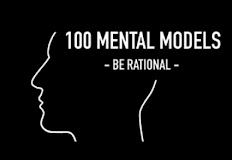A Jakarta and Bali Exhibition of 1930 Bali Images from the Pages of Life Magazine by Horace Bristol.
(7/17/2010) A rare opportunity to view Bali as it was in the 1930s is available to residents and visitors to Jakarta and Bali via a traveling exhibition of vintage photographs taken by Life Magazine photographer Horace Bristol.
The exhibition gathered from images preserved by the estate of Horace Bristol is comprised of pictures taken by the esteemed photographer in 1939 and published as LIFE's first international story in 1940.
Bristol came to Indonesia in late 1930s to photograph and document life in the then Dutch East Indies. The resulting photos became a 14-page spread in LIFE's premier international edition. The current exhibition focuses on rural life in late 1930s Indonesia, from traditional dance, religion, art, to textiles and farming. These images reflect traditions and practices that remain part of Indonesian culture today.
A concurrent exhibition of Bristol's work is on view at the J. Paul Getty Museum in Los Angeles from June - November, 2010.
HORACE BRISTOL 1908-1997
Horace Bristol used his camera to record the human, intimate moments in the grand sweep of history. He captured the best and the worst of this century, from poignant images of the urban poor and migrant farm workers during the Depression, to battle scenes of World War II and compelling portraits of post-war Japan and Southeast Asia.
Born November 16, 1908 in Whittier California, Bristol studied at the then just-opened Art Center of Los Angeles, where he was exposed to the subtle, painterly images of Edward Steichen and the powerful industrial landscapes of Margaret Bourke-White. In 1933, Bristol moved to San Francisco to pursue commercial photography, renting a studio a few doors down from Ansel Adams' gallery near Union Square. Through Adams, Bristol befriended members of the famed "Group f/64" - including Edward Weston, Dorthea Lange and Imogen Cunningham.Bristol began contributing to LIFE Magazine as a freelance photographer in June 1937, and garnered his first cover just two months later. He was soon hired on staff, working alongside such photographic giants as Alfred Eisenstaedt, Peter Stackpole, and a personal hero, Margaret Bourke-White. Late in 1937, Bristol proposed a story about migrant farm workers in California's Central Valley—a project that would include accompanying text by novelist John Steinbeck. Though LIFE turned down the story, Bristol and Steinbeck agreed to collaborate on a book length project, and the two men spent several weekends in labor camps during the winter of 1938. Bristol took hundreds of photographs of the suffering farm workers, only to have Steinbeck withdraw from the partnership to write the story as a novel, which became his masterpiece "The Grapes of Wrath."
In 1941, after the attack on Pearl Harbor, Bristol lept at the opportunity to work as one of a select group of five photographers documenting the war under the direction of the influential Edward Steichen. Bristol photographed behind the scenes of key Naval battles, including the invasions of North Africa, Okinawa and Iwo Jima. Following the war, Bristol brought his family to Japan where he photographed the war's devastating legacy, as well as the vestiges of traditional Japanese life. In Tokyo, he established the East-West Photo Agency and began selling his photographs of Southeast Asia to virtually every pictorial magazine in Europe and the United States. He also published several books under the East-West name focusing on Pacific Rim countries in transition.
In 1956, devastated by the suicide of his wife, Bristol burned all the negatives and photographs that he kept at his seaside house in Japan, effectively ending one of the most intense photographic careers of his time. His remaining photographs were packed into footlockers, stored, and left untouched for nearly thirty years.
Having put photography behind him and remarried, Bristol was reminded of his past when his 15-year old son Henri came home from high school in 1985 with an assignment to read "The Grapes of Wrath." Only then did Bristol open the musty footlockers that kept a lifetime's worth of images and memories. When he saw the tired, dignified faces of the migrant farm workers, he couldn't help but regret that his life's work had been all but forgotten in the three decades since he'd put away his camera.
Horace Bristol died in August 1997, but not before seeing his photographs exhibited in galleries and museums throughout the United States and Europe, and a book of his work published in his name: Horace Bristol, An American View (Chronicle Books, 1996). Currently, his work is on view at the Los Angeles County Museum of Art as part of their "Made in California" exhibition, and the J. Paul Getty Museum recently acquired photos from "The Grapes of Wrath" series for their collection.
Horace Bristol, Indonesia 1939
1930 Images by Horace Bristol for Life Magazine
Jakarta: July 16-30, 2010 at the Four Seasons Hotel, Jakarta
Bali: August 8 – October 4, 2010 at Jenggala Keramik Jimbaran, Bali.
© Bali Discovery Tours. Articles may be quoted and reproduced if attributed to http://www.balidiscovery.com. All images and graphics are copyright protected.
Images
Tuesday, July 20, 2010
Subscribe to:
Post Comments (Atom)





No comments:
Post a Comment
your comments are now being moderated